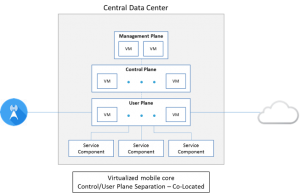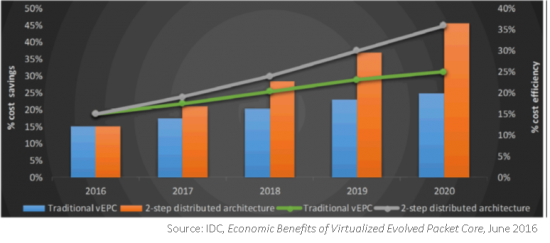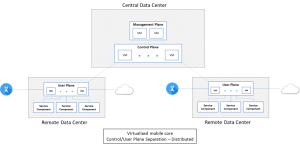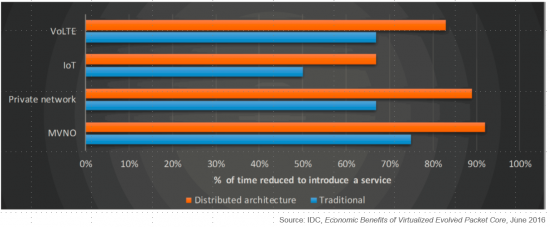5G is closer than you might realize.
It seems like a not a week goes by where you read about another development, test, or government agency helping to pave the way to this next generation of mobility. (Don’t get me wrong – I love this stuff.) So how can all this be happening before we even have our first 5G standards written? Well, we do have a set of use cases provided by the Mobile Network Operators (MNO) – both directly and via the NGNM 5G organization (white paper from 2015 – https://www.ngmn.org/5g-white-paper.html).
 These use cases are there to guide the development for 5G to support the desired business outcomes from implementing this next generation technology (and standards). This includes enabling vast new opportunities in the Internet of Things and growing video as well as providing greater agility and efficiency for the MNO and for the customer (individual and business).
These use cases are there to guide the development for 5G to support the desired business outcomes from implementing this next generation technology (and standards). This includes enabling vast new opportunities in the Internet of Things and growing video as well as providing greater agility and efficiency for the MNO and for the customer (individual and business).
Some of these use cases require open, extensible, and secured virtualized platforms. But 5G is more than just virtualizing some purpose-built product. The 5G use cases call for re-imagining the MNO network. Moving from the Central Office to a distributed architecture of data centers – “The cloud” if will.
For this blog, I am going to focus on the reimagining of the mobile core. And discuss how you can implement a 5G capable mobile core today and by doing so you can improve agility and your top and bottom line.
The 5G capabilities leveraged are:
- Radio Agnostic (any RAT)
- Virtualization (NFV)
- Software Defined Networking (SDN)
- Control User Plane Separation (CUPS)
- Distributed Architecture
- Network Slicing
- Ultra-high reliability
- Ultra-high scale (that means scaling low and high – both)
- Ultra-low latency (real-world latency must consider the round trip of the service)
- Efficiency (we need to deliver services at lower costs per session)
A really good independent study.
The goal is to evolve your mobile core architecture that can deliver savings/revenue and agility. To make my points I will refer to a recently published report on a study by the research and analyst firm, IDC. You can download the report at http://www.cisco.com/c/m/en_us/offers/sp04/ultra-services-platform/index.html#
The report looks at potential benefits by migrating from purpose-built to virtualized mobile core. I know, you’ve read a few of these – but this one is different. This independent study included IDC speaking with several MNO around the world. They also considered whether there are tangible benefits of continuing the evolution to a distributed architecture (not simply going virtual).
In this study, IDC took an approach to ensure a real world scenario. Understanding that in all likelihood a MNO would evolve this change to virtualization and distribution. They modeled their studies as a multi-step approach (purpose-built to virtualized, and then virtualized to distributed).
What they found is worth the time to read the report. When the whole concept of SDN and NFV came out it was heralded as a great way to cut costs. Then as some began to “dabble” in virtualization there were concerns about the actual savings. Today, most in the industry understand that if done well, virtualization’s biggest benefit is the agility it enables. Still, the cost savings are there (both Capex and Opex). There is also the benefit of getting new services to market faster.
Why virtualize?
 IDC’s study concluded that by virtualizing all mobile core functions the MNO would achieve far improved functional utilization of up to 87%. This alone resulted in improved cost efficiencies of up to 25%. They also found that while there are good cost savings from these efficiencies, the saving quickly flatten out.
IDC’s study concluded that by virtualizing all mobile core functions the MNO would achieve far improved functional utilization of up to 87%. This alone resulted in improved cost efficiencies of up to 25%. They also found that while there are good cost savings from these efficiencies, the saving quickly flatten out.
So, can we do better? I am so glad that you asked (you really are a great audience). In fact, you can do better – much better. You do better when you go to a distributed architecture.

Why distributed architecture?
This study showed that by leveraging the 5G use cases of control/user plane separation and distributed architectures, mobile operators can further increase cost savings over those who deploy virtualized in a more traditional centralized architecture. The distributed architecture increase opportunities to increase cost savings by placing resources closer to the end users.
 As result, the operator can reduce backhaul and internet interconnect costs, and avoid network resource idle time. Additional efficiencies are found through automation and network slicing.
As result, the operator can reduce backhaul and internet interconnect costs, and avoid network resource idle time. Additional efficiencies are found through automation and network slicing.
Network slicing creates a logical, customized network for specific use cases, services and customers. Implementing network slicing in a distributed virtualized architecture provides for greater granularity and efficiencies. This results in a better service for the customer and reduced costs for the provider.
The IDC study shows that factors such as the extent of network virtualization and control/user plane separation–driven architectures can result in potential opex cost savings in the range of 20– 40% over a five-year period. The study these cost saving continue to increase annually over the 5 year model, unlike the centralized architecture that flattened out.
In short, a distributed architecture is more efficient because it places only those resources that you need, where you need, when you need them.
What about Agility?
The IDC study showed notable improvement in service agility driven by an orchestration and network slicing in a distributed architecture. They found a promising 67% reduction in TTM to launch new services such as MVNO, private mobile network, IoT use cases, and VoLTE.

Why now?
Well, as noted earlier, 5G is closer than you might think. You really need to consider 5G capabilities in products and solutions you implement today. But more than that, why not enjoy the benefits today? If you can implement a distributed mobile core that can scale as big or as small as you need. If you can spin-up those services and functions that use and your customers’ needs when and where you need them – why not now?


CONNECT WITH US